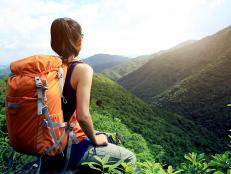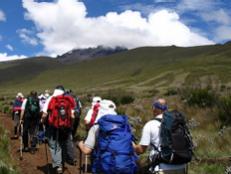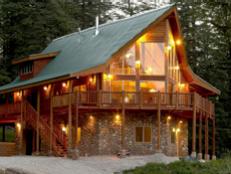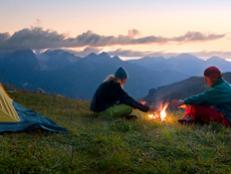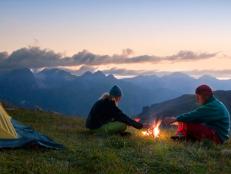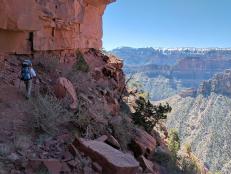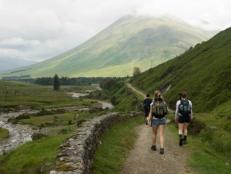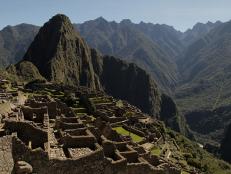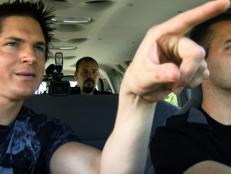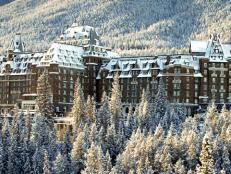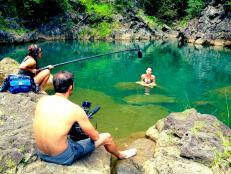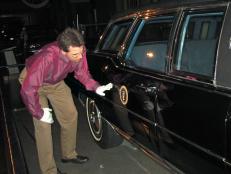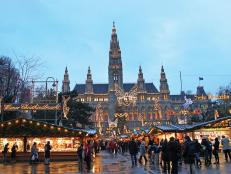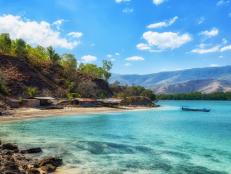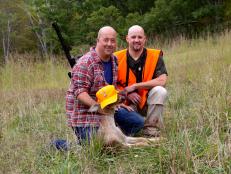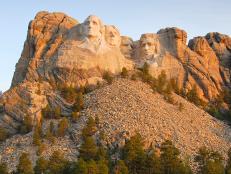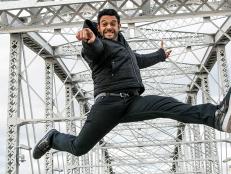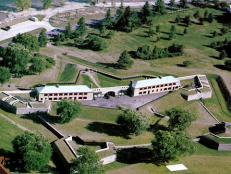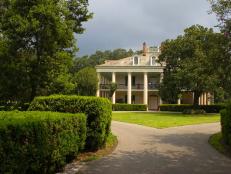What to Do in Wyoming
Super volcanos, sci-fi starscapes and plenty of booze trace a line through a state with fewer people than most U.S. cities.

Joe Sills

The warnings greet you as you cross the Wyoming border—bring extra water, gas and blankets in case you break down. The west can still be wild, they warn, and in the Cowboy State, civilization is scarce.
For one month, I criss-crossed the state of Wyoming, exploring Colorado’s forgotten cousin while its infamous winter weather was still months away. What I discovered was a land full of mystery and mysticism, with landscapes that rival the most dramatic on Earth.
For true nomads, there may be no better state to escape than Wyoming. Here’s what to do if you find yourself beyond the warning signs on the vast frontier.
Get Lost in the Galaxy at Devil’s Tower

Joe Sills
If you’re a sci-fi fan, you know the silhouette of the Devil’s Tower. The remote national monument is the signature backdrop of Steven Spielberg’s 1977 cult classic Close Encounters of the Third Kind. And far on Wyoming’s eastern edge, the 867-foot monolith cuts an eerie gash into the night sky.
In real-life, Devil’s Tower is every bit as imposing as its Hollywood portrayal. And while you won’t find Richard Dreyfuss scrambling up its cliffs, you will find world-class rock climbing, a few sparsely populated campgrounds and a view of the night sky that puts the Milky Way at your fingertips.
You can catch the view from either the National Park Service or KOA campground at the Tower’s base, or stake out the sunset atop Joyner Ridge Trail for the view seen here.
Rinse Off and Drink Down in Casper
185 miles from the Devil’s Tower, you’ll stumble upon the frontier city of Casper. Midway between the Devil’s Tower and the gateway to Yellowstone National Park, Casper—population 55,000—is a hub of activity year-round. Winter months offer Nordic sports in the nearby Laramie Mountains, and warm months serve up trout fishing on the North Platte River.
If you’re roughing it on the road, Casper also hosts a downtown littered with hotels and bars to wash off and drink away your campsite grime. Highlights include the Frontier Brewing Company, Gaslight Social, C85 Wonder Bar and Racca’s Pizzeria.
Be sure to hit up Casper’s Rock the Block block party if you’re in the area on a Thursday night in the summer, and make a pit stop at Fort Casper, where the Oregon Trail once passed through.
Camp in the Bighorn Mountains

Joe Sills
From Casper, travelers can take a direct route west towards the bustling tourist town of Jackson Hole, or opt for the road less traveled—north towards the Bighorn National Forest, and a world of peaceful, dispersed campsites where relatively few tourists roam.
Stock up on supplies in the towns of Sheridan or Buffalo, and make your way west towards the national forest. The U.S. Department of Agriculture manages dispersed campgrounds in the heart of the Bighorns, near the Cloud Peak Wilderness and Elgin Peak, and on their western reaches near Shell Reservoir.
Fair warning: These campsites are remote, so plan to bring everything you need with you, and leave no trace behind when you head out. You can stay for free or a donation, but stays are limited to 14 days. Moose, black bears and mountain lions are native to the Bighorn Mountains. Be wary of close encounters with each while you soak in the herds of pronghorn antelope, and soaring eagles and falcons of the peaks.
Hike at Grand Teton National Park

Joe Sills
Some of Wyoming’s most breathtaking trails begin just outside the town of Jackson, in the confines of Grand Teton National Park. You can reach the Tetons from the Bighorn Mountains via a scenic drive through the Shoshone National Forest or bouncing down to the city of Thermopolis, where two hot spring-fed waterparks can give you a pre-hike soak.
Entering the Tetons from the east will send you over the Continental Divide and into a landscape ripped from the pages of Game of Thrones.
Grab your hiking boots and lace up. In the Tetons, the 2.2-mile Grand View Trail will dish out dramatic long-range views of the Tetons, while the 10-mile Cascade Canyon Trail will take you across the impossibly clear Jenny Lake and up-close and personal with the peaks. Want to ditch the crowds altogether? The 14-mile Upper Darby Canyon Trail can get you away from the crowds on the park’s less-visited western side.
Campsites are available within the park for those willing to brave the native grizzly population. If luxury digs are your scene, local resorts like the Teton Mountain Lodge offer spas, dining and—in the winter—skiing.
See a Super Volcano at Yellowstone

Joe Sills
No journey to Wyoming is complete without a stop at Yellowstone National Park. Simply put, Yellowstone is one of the world’s most famous parks for a reason. And while the Tetons might arguably offer better long hikes, Yellowstone offers travelers a world of its own—an up-close view of a super volcano at work.
Many of these views are easy to access. Short stops on the roadside provide quick access to the Grand Prismatic Springs (pictured above) or Old Faithful. In addition to these famous Yellowstone landmarks, a short hike on the 2-mile Monument Geyser Basin Trail will put you on top of the sulphuric, gurgling bloodstream of Yellowstone Caldera. Up for some stairs? Uncle Tom’s Trail plunges 500 feet down into the Grand Canyon of the Yellowstone, placing 328 stairs between hikers and a misty view of Yellowstone Falls.
Need More Wyoming?
Check out Flaming Gorge National Recreation Area, Laramie Jubilee Days in July, the natural hot springs of Thermopolis and Hell’s Half-Acre for more campsites, cocktails and curiosities in the Cowboy State.
